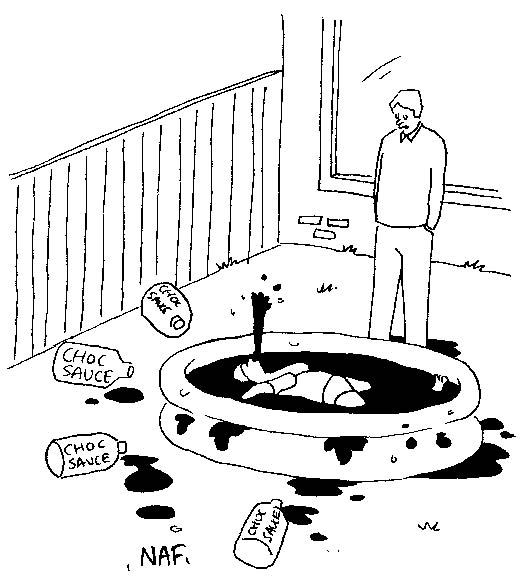What are we supposed to make of those odd pictures of Osama bin Laden sitting crouched in a dingy, undecorated concrete room watching something blurred on a small TV screen? Is this really the face of jihadist evil? These were the questions behind this week’s provoking 15-minute drama in the From Fact to Fiction slot on Saturday (Radio 4).
What are we supposed to make of those odd pictures of Osama bin Laden sitting crouched in a dingy, undecorated concrete room watching something blurred on a small TV screen? Is this really the face of jihadist evil? These were the questions behind this week’s provoking 15-minute drama in the From Fact to Fiction slot on Saturday (Radio 4). Christopher William Hill’s task was to take an item of news from the past seven days and make a drama out of it. He couldn’t have been given a better week to cover. The dripfeed of pictures from the bin Laden compound in Abbottabad, northern Pakistan, has been like manna to the imagination. What kind of man was Osama bin Laden? What was going on inside his head when he ‘planned’ the attack on the Twin Towers? How did he live from day to day?
It’s also been Museums Week, and so Hill cast his mini-play (directed by Mary Peate) as an ethical debate about the objects discovered in and taken from the compound in Abbottabad. Is that really a DIY power drill on the table beside him? How could that be used to portray the man who has held the West captive since 9/11? Kirsten (played by Madeleine Potter) is a curator who is planning a 9/11 exhibition and she is arguing with her colleague Patrick (Christopher Naylor) about the form, the content of their ‘show’. Kirsten believes her job is to select and display objects in glass boxes, finding a way to encapsulate bin Laden in a single exhibit. Patrick wants to reconstruct three rooms of the compound and encourage visitors to the museum to ‘experience’ bin Laden’s way of life and all his works.
‘We can place it in context,’ says Kirsten as she negotiates with Akif in Abbottabad to ‘buy’ a piece of the Black Hawk helicopter shot down in the raid on the compound. ‘We can tell the visitor what to think.’ The trouble is no weaponry has yet been found, no small-arms. How then can she convey the violence personified in bin Laden’s bearded image?
Time passes, and Patrick comes up with a solution. ‘The gunfire’s on a loop,’ he explains. Visitors to the three reconstructed rooms in the museum will be able to hear it, gathering atmosphere and drama from the sounds. ‘Every five minutes there’s a recording of a helicopter flying over.’
The disadvantage of this kind of snapshot drama, written at speed and delivered in just 15 minutes, is that there’s no time to expand on the questions being raised, to explain or modify the arguments. Is Kirsten’s approach really any better, or worse, than Patrick’s? How will bin Laden be portrayed in 50 years’ time, when hindsight can come into play? What, though, was most intriguing in Hill’s drama, called Artefacts, was the question raised at the end by Akif (Adeel Akhtar). He was not averse to taking bribes as Kirsten desperately negotiated for something, anything to display in her glass case. But he was also keenly aware of the dangers of turning the compound into some kind of shrine. Make it a school, or an office, he suggests. Something ordinary, something mundane, something that turns it into ‘a place where something happened…once’. Not unusual, then. ‘Not a Ground Zero for tourists.’ There was a lot more meat in this short play than in a week’s worth of news bulletins, which are becoming more and more surreal, as information itself becomes polluted by a weird combination of overexposure and too much editorial control.
Katie Burningham first met Bob Hill by a record stall on Broadway Market in Hackney. Bob’s 86 now, an East Ender with a touch of the Strictly Come Dancing about him. Burningham is a young radio producer in need of a subject. Why not ask Bob to teach her to dance, the old-fashioned way — waltzes and foxtrots rather than hip-hop and garage? The result: a beautifully paced half-hour documentary Heel, Toe, Step Together (Radio 4, Sunday), which has just won Burningham a Gold Award at this year’s Sony awards (the radio equivalent of the Oscars, or perhaps more accurately the Baftas). Nothing much was said, but so much was shown through the clever use of music, redolent of the Thirties, so that we could imagine Bob and Katie not in Bob’s tiny living room but on a crowded dance floor, with polished floors, spangly dresses and men in suits and smartly polished shoes.
Dancing is all about counting, we discovered, one-two-three, one-two-three, one-two-three, across the floor and out on to the street. Everywhere you walk, counting the steps, pacing your life out, in even, rhythmic strides, not too long, nor too short, using the pulse of the music to carry you along. A simple, but so effective lesson for budding radio producers, and for listeners, too.






Comments